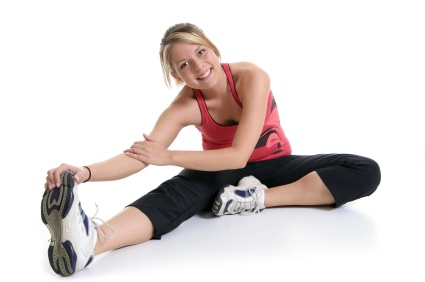 I recently attended three stretching seminars, all taught by experienced health and fitness educators, on three consecutive weekends. One seminar focused on stretching muscles that are tight, one focused on activation for muscles that are weak, and the third dealt with how both approaches can be effective. There are many different ways to effectively stretch, so to make sense of all that information, it might be helpful to start by saying this: not everyone responds the same way to stretching, and not every body needs every stretch.
I recently attended three stretching seminars, all taught by experienced health and fitness educators, on three consecutive weekends. One seminar focused on stretching muscles that are tight, one focused on activation for muscles that are weak, and the third dealt with how both approaches can be effective. There are many different ways to effectively stretch, so to make sense of all that information, it might be helpful to start by saying this: not everyone responds the same way to stretching, and not every body needs every stretch.
Here are some key questions to ask yourself before you stretch: What is your own physical set-up? Are you chronically tight, hyper-mobile through the joints, or somewhere in between? Are there some muscles that are always tight, while others never seem to tighten up? And how flexible do you need to be? The first step in effective stretching is to know your own body. If you have hyper-mobile joints and are loose already, you’ll create problems for yourself if you continue to stretch muscles that are already flexible. Sorry, no yoga classes for you …unless you’re experienced and really know how to balance strength with openness in each pose. Believe it or not, your goal in stretching or yoga should never be to stretch every muscle group as far as you can—because becoming too flexible in many cases can cause weakness. If your muscles are on the tighter side, its important to raise your own awareness to what is a safe limit for stretching your muscle tissue.
Another key concept is using stretching as an effective way to reset muscle length. Often, when we stretch at the end of a workout, the most effective thing we can do is reset tight muscles to their resting length, which maintains balance through your body and just feels good. In other words, stretching doesn’t always have to be about creating new length in muscle tissue. Here are some Nimble foundation principles for effective stretching:
*When you’re stretching, use this guiding principle: Being strong and limber is ultimately about having stability in your joints and freedom of movement around a healthy spine, not about how far you can stretch. Don’t sacrifice the health of your spine or your joints just to push your tissue a little bit further.
*Think balance when you stretch! Be aware of where you’re tighter—front to back, right to left, top to bottom—and spend more time stretching the tighter side. Seek balance in your stretches. Think about balance also in your twisting stretches.
*Your breath is vital in the process of relaxing muscle and fascial tissue. Your breath will help you focus your awareness and open up muscle tissue. Exhaling helps relax the muscle you’re stretching, allowing you to take it into a deeper stretch.
*There’s no need to do static stretches before playing a sport or an intense workout. In fact, it can be counter-productive, making your muscles less neurally active. Static stretching, where the stretch is held in one position, is much more effective post exercise, because warm muscle tissue is easier to stretch. Before sports or intense workouts, we recommend muscular activation exercises and doing a more dynamic warm-up that will prepare muscles to handle more stress.
*Active stretching is OK before sports and workouts. Active stretching is moving through a particular range of motion repeatedly, allowing the muscle tissue to gradually warm up and lengthen to a greater range of motion. For example, a baseball player will swing the bat from side to side in a gentle arc, gradually increasing the range of motion with each swing. You use the same approach for your warm up, moving your legs and arms gently through different planes of motion to prep for exercise.
So! In this article, we just scratched the surface of the when, where and why of stretching. Next month we will continue to discuss effective stretching techniques.
LIVE HEALTHY NOW!
Daniel Lucas / Keith Paine

